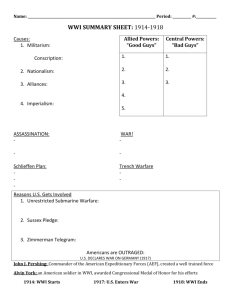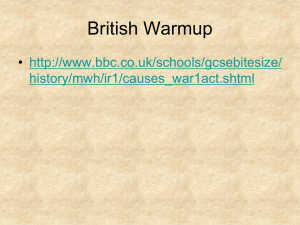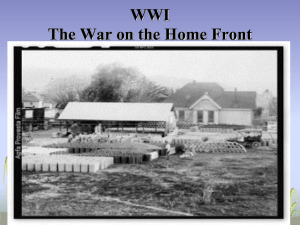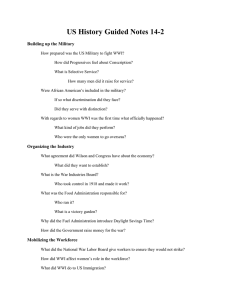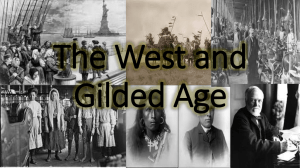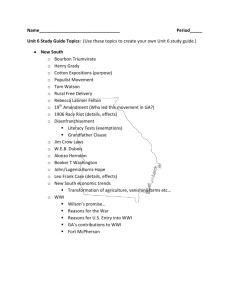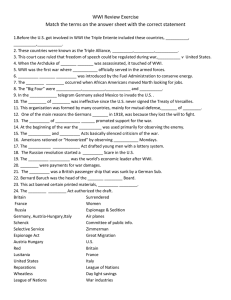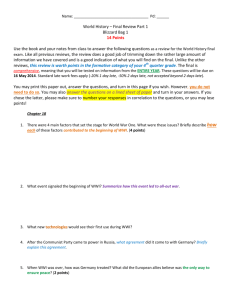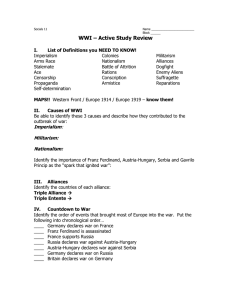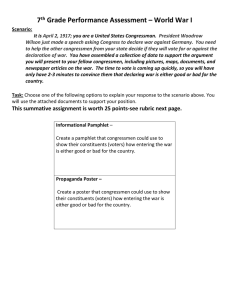Ancient Civilizations and Religion
advertisement
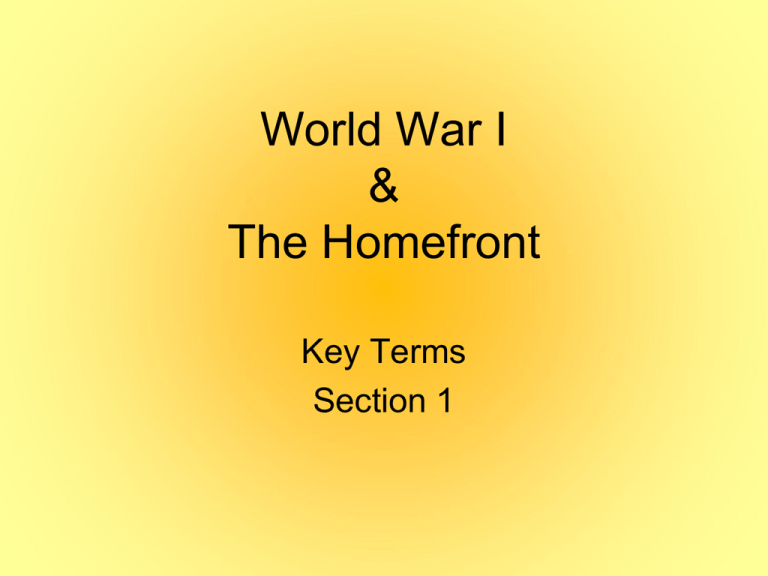
World War I & The Homefront Key Terms Section 1 ESSENTIAL QUESTION How did the outbreak and course of WWI effect the population within the United States? 1. The Great War (WWI) • U.S. joined the war in 1917 • The war ended in 1918 • 2.8 million U.S. men were drafted. • 53,513 U.S. soldiers died in battle. • 63,195 U.S. Soldiers died from disease and accidents. Two young WWI soldiers • Total U.S. soldiers lost: 116,708 2. Conscription • Conscription is Involuntary military service. (The Draft) • Congress passed the Selective Service Act of 1917. • All men between 21 and 30 had to register for draft. • A lottery randomly determined the order people were called. • Local draft board determined fitness. Patriotic Sheet music cover,1917 3. Propaganda • The Great War (WWI) was under way in Europe • Many Americans wanted to remain isolated from world troubles • Britain worked hard to win American support. • Once committed to join the war, the U.S. Government sought to gain support for the war through pamphlets and posters. An appeal to patriotism. 4. Espionage • A general fear of spies grips the United States during WWI. • Espionage Act of 1917. – Penalties and prison terms for giving aid to the enemy. • The Sedition Act of 1918. – Public opposition to the war is illegal. • 1,500 prosecutions and 1,000 convictions WWI poster 5. The War Industries Board • Agency created by Congress to encourage cooperation between big business and government • Established July 1917 to coordinate the production of wartime materials • The WIB told manufacturers what to produce, how much to produce, and issued deadlines • Controlled ALL facets of production from factory to finished product
